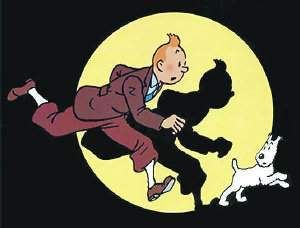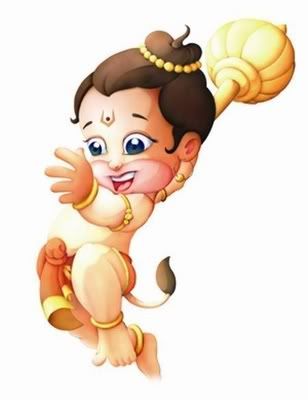
When I got plunked down in a Swiss boarding school five decades ago, I stumbled onto a large-format, hard-bound comic book about a red-headed kid in knickers.
The red-headed kid was Tintin. And my seven-year-old brain was enthralled and transfixed.
Tintin is part of the Belgo-French tradition of Bande Dessinées, or BDs, hard-bound comic books read by children and adults, featuring a vivid, fitfully funny panorama of inventors, conquerors, roving reporters, intellectual slackers, quality art and spot-on satire ...
Tintin's adventures have been translated into nearly 80 languages, including English, and the series has sold 220 million copies worldwide. He also has his own television cartoon series.
Which kind of explains why Peter Jackson and Steven Spielberg want to make features about him. Two hundred and twenty-million hard-bound comic books is one hell of a lot of volumes...
We don't pay a lot of attention around here to foreign animation, sticking mostly to domestic product for obvious reasons. But there's a lot of animated features beyond our shores that make big waves in the markets where they're produced. Much of it never penetrates the consciousness of mainstream American audiences.
Take India, for example. The Los Angeles animation community is aware of the expanding role of Indian cgi studios in sub-contracting work, but there is a whole other side to Indian animation: features produced for domestic consumption.
An Indian animated film released two years ago has turned the continent's 'toon industry in a direction that will be familiar to L.A. animators:
In 2005, an animated feature called Jai Hanuman hit theaters in India and set the animated feature industry on fire. Children and families went crazy for this film and, following its record success, many Indian companies have been trying to get in on the action
Have we been here before? Big animated hit triggers a mad scramble by competitors to climb on the gravy train? But there seems to be an awareness by Indian film execs of oncoming pitfalls. As one industry person said:

The key challenge for the Indian market is the availability of feature film-ready talent. Secondly, scriptwriting for animation will have to evolve in India. It remains a challenge and will take several years before we have Indian animation scriptwriters. Thirdly, the studios are still in the process of setting up the feature film pipeline ...
Despite its huge live-action film industry, Indian animation producers want to keep things simple. Especially as they ramp up:
We are concentrating on 2D feature films to start within the domestic market and, eventually, we'll move to 3D feature films.
Enjoy your Sunday.




2 comments:
Conan O'Brien's big break?
Here's a little trivia about Tintin. His author was awarded a "Light of Truth Award" by the Dali Lhama in 2006. It seems his book "Tintin in Tibet was helpful in spreading knowledge of Tibet and its struggle.
Quote:
"Tintin in Tibet, a book which brought the Tibetan landscape and culture to new audiences across the world. In 2001 the Foundation blocked Chinese attempts to rewrite Tintin's and Tibet's history by demanding the recall of the Chinese-language book, which had published the book using the title "Tintin in China's Tibet".
So maybe I should start taking Stan, Kyle and Eric's ravings a little more seriously - maybe truth IS stranger than fiction?
If you play poker get this and start winning.
Post a Comment